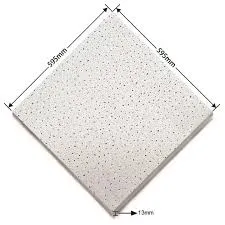- Afrikaans
- Albanian
- Amharic
- Arabic
- Armenian
- Azerbaijani
- Basque
- Belarusian
- Bengali
- Bosnian
- Bulgarian
- Catalan
- Cebuano
- Corsican
- Croatian
- Czech
- Danish
- Dutch
- English
- Esperanto
- Estonian
- French
- German
- Greek
- Hindi
- Indonesian
- irish
- Italian
- Japanese
- Korean
- Lao
- Malay
- Myanmar
- Norwegian
- Norwegian
- Polish
- Portuguese
- Romanian
- Russian
- Serbian
- Spanish
- Swedish
- Thai
- Turkish
- Ukrainian
- Uzbek
- Vietnamese
aug. . 18, 2024 13:25 Back to list
Installing Ceiling Access Panel for Easy Access in Your Home or Office
Installing an Access Panel in the Ceiling A Step-by-Step Guide
Access panels serve as essential components in both residential and commercial construction projects. They provide convenient access to plumbing, electrical systems, and other infrastructure hidden behind walls or ceilings. Installing an access panel in the ceiling can enhance maintenance efficiency and ensure that appropriate repairs can be made without significant disruption. This article will guide you through the step-by-step process for installing an access panel in the ceiling.
Materials and Tools You Will Need
Before beginning the installation, gather the necessary materials and tools. You will need
- Access panel (size depends on your specific requirements) - Stud finder - Measuring tape - Pencil - Drywall saw or utility knife - Level - Screwdriver (or power drill) - Safety goggles and dust mask
Step 1 Determine the Location
Choosing the right location for your access panel is crucial. Consider what you will need to access in the future, such as plumbing or electrical fixtures. Use a stud finder to locate the ceiling joists and avoid cutting into them. Mark the desired area on the ceiling with a pencil, ensuring it is accessible and out of the way of any structural components.
Step 2 Measure and Cut the Opening
Once you've selected the location, measure the dimensions of the access panel. Draw a rectangle or square on the ceiling corresponding to these dimensions. Double-check your measurements to ensure accuracy. Using a drywall saw or utility knife, carefully cut along the marked lines. Take your time to make a clean cut, as a jagged edge may affect how well the access panel fits.
Step 3 Prepare the Access Panel
installing access panel in ceiling

Unbox your access panel and check that all necessary components are present. If it includes a frame and trim, ensure they are ready for installation. Some panels may have knock-out sections that can be removed with ease. If applicable, remove these sections for a better fit and more straightforward access.
Step 4 Install the Access Panel
Position the access panel within the opening you’ve created. It should fit snugly without excessive force. Use a level to ensure that it sits straight. Depending on the design of your access panel, you may need to secure it with screws or adhesive. If screws are necessary, drill pilot holes to make the process smoother, and then use your screwdriver or power drill to secure the panel into place.
Step 5 Finishing Touches
Once the access panel is secured, check its operation to ensure it opens and closes smoothly. If your panel has a trim ring, install it to conceal any rough edges and give a finished look to your installation. You might also want to paint the access panel to match the ceiling for a seamless appearance.
Step 6 Clean Up
After successfully installing the access panel, be sure to clean up the workspace. Remove any debris or dust generated during the cutting process. Wearing safety goggles and a dust mask during installation is important to protect yourself from particles and debris.
Conclusion
Installing an access panel in the ceiling is a practical project that enhances accessibility to vital systems within your home or office. By carefully choosing the location, accurately measuring and cutting, and properly securing the panel, you can ensure a professional and efficient installation. This upgrade not only benefits current accessibility but can also add value to your property by improving the manageability of hidden infrastructure. Always prioritize safety during the installation, and when in doubt, consult with a professional for guidance.
-
PVC Laminated Gypsum Ceiling Board OverviewNewsApr.11,2025
-
Mineral Fiber Ceiling Tiles Price Analysis and ComparisonsNewsApr.11,2025
-
Crafts of Mineral Fiber Ceiling Tile ManufacturingNewsApr.11,2025
-
Difference Between Gypsum and PVC CeilingNewsApr.11,2025
-
An Overview of Mineral Fiber Ceiling TilesNewsApr.11,2025
-
Advantages of PVC Gypsum CeilingNewsApr.08,2025







